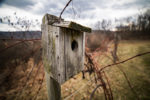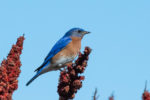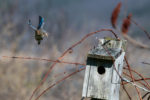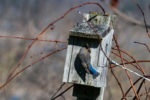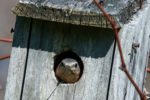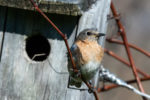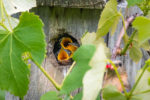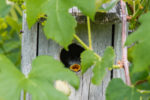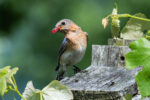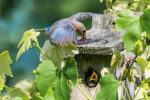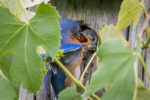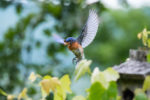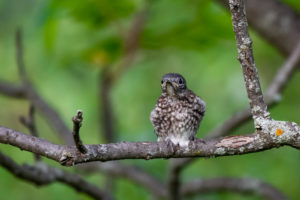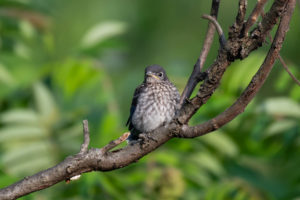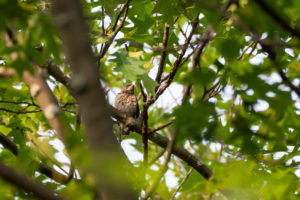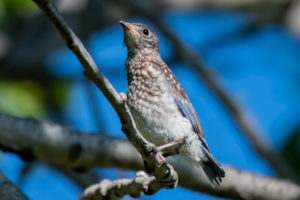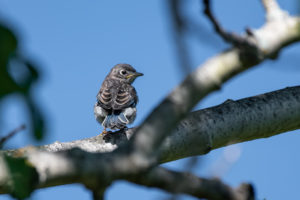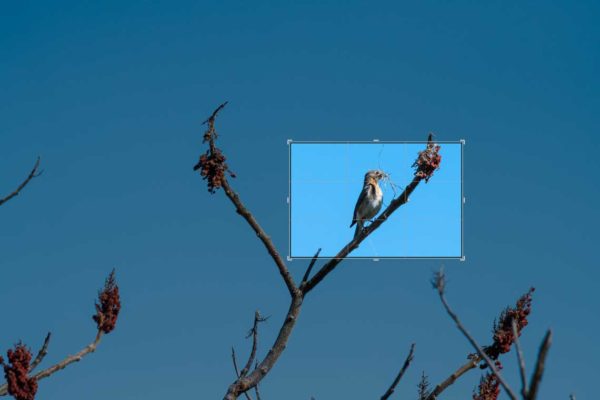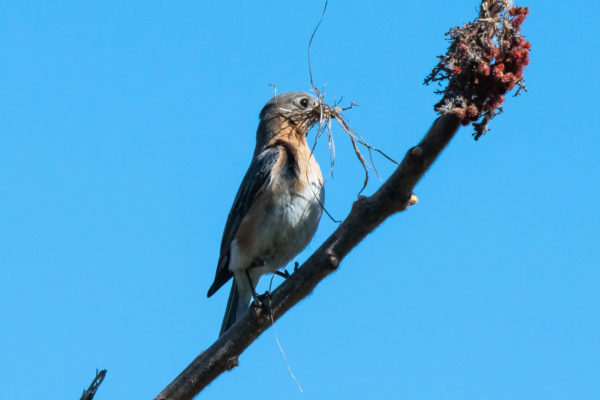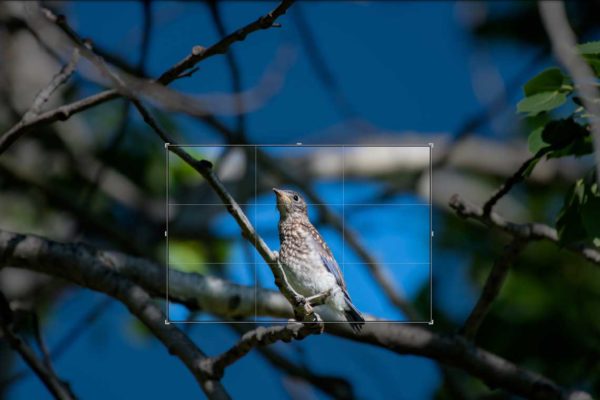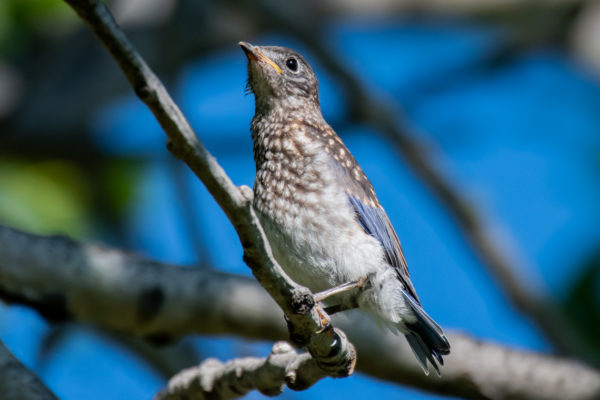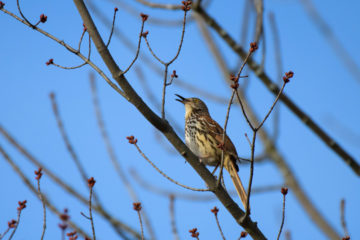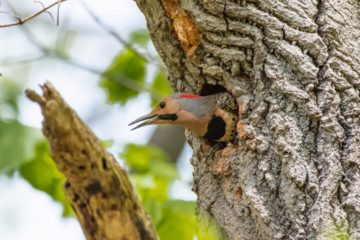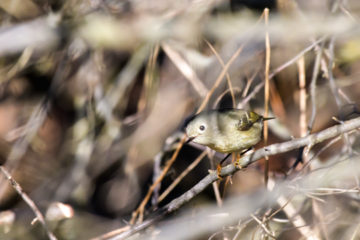A New Bluebird Family
Images
A male and female bluebird have chosen an old birdhouse mounted on the end of a grape arbor for a nesting place. There is a cluster of staghorn sumac trees nearby that provide a convenient food source, and the house has also attracted the interest of a chickadee, but the bluebird’s nest building has already begun.
Six weeks later there were three chicks in the nest being fed by both the mother and father.
The chicks left the nest two days after the pictures above were taken, and here are two of then sitting in the nearby sumac trees.
The the day after leaving all three were spotted high in an oak tree.
And again in an aspen tree five days after leaving the nest.
Discussion
Getting Close
Physically
The greatest challenge to getting pictures of birds is getting close enough to them without scaring them away. Two approaches were used to capture these images. First, to get as physically close to the birds as possible a camouflage fabric photo blind was used. It can be thought of as a huge camo pillow case with an opening for a lens. In this instance the LensHide Photo Blind by LensCoat was a very effective solution and was used without a tripod, but with the camera hand-held by the photographer while seated on a folding chair. The birds are certainly aware of the presence of the hide but ignore it much more quickly than they would a person located in the same place.
Optically
Using the longest telephoto lens and camera with the highest resolution sensor possible is mandatory. The pictures here were all captured with the Nikon D850 camera with 45.7 megapixel sensor and the AF-S NIKKOR 200-500mm f/5.6E ED VR lens used at 500mm. In some cases the AF-S Teleconverter TC-14E III was used with the 200-500mm zoom for an effective maximum focal length of 700mm. In the past it would have been impossible to get pictures as sharp as these while hand-holding a 500 or 700mm lens due to camera shake, but the Nikon vibration reduction (VR) system in the lens does and outstanding job stabilizing the exposure.
The high resolution sensor on the D850 allows considerable cropping of the image without loosing adequate sharpness for web images. For example, below is an image taken at 500mm showing how severely it was cropped.
Now the same at 700mm.
Exposure Data (typ)
Camera: Nikon D850
Lens: AF-S NIKKOR 200-500mm f/5.6E ED VR
Focal Length: 500mm
Lens: AF-S Teleconverter TC-14E III
ISO: 1400
Shutter Speed: 1/1000 – 1/4000 sec.
Aperture: f/5.6 – f/8
File Format: RAW

